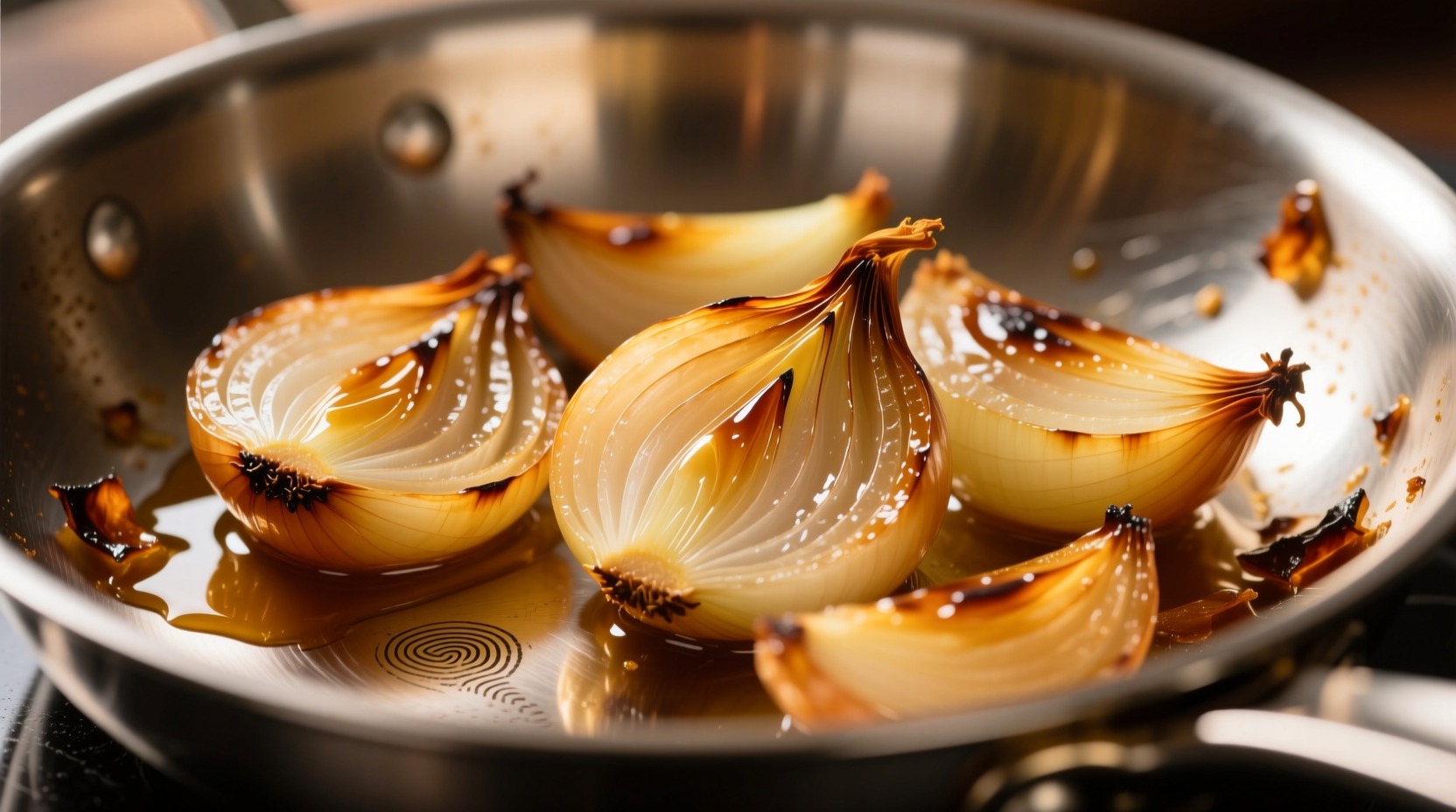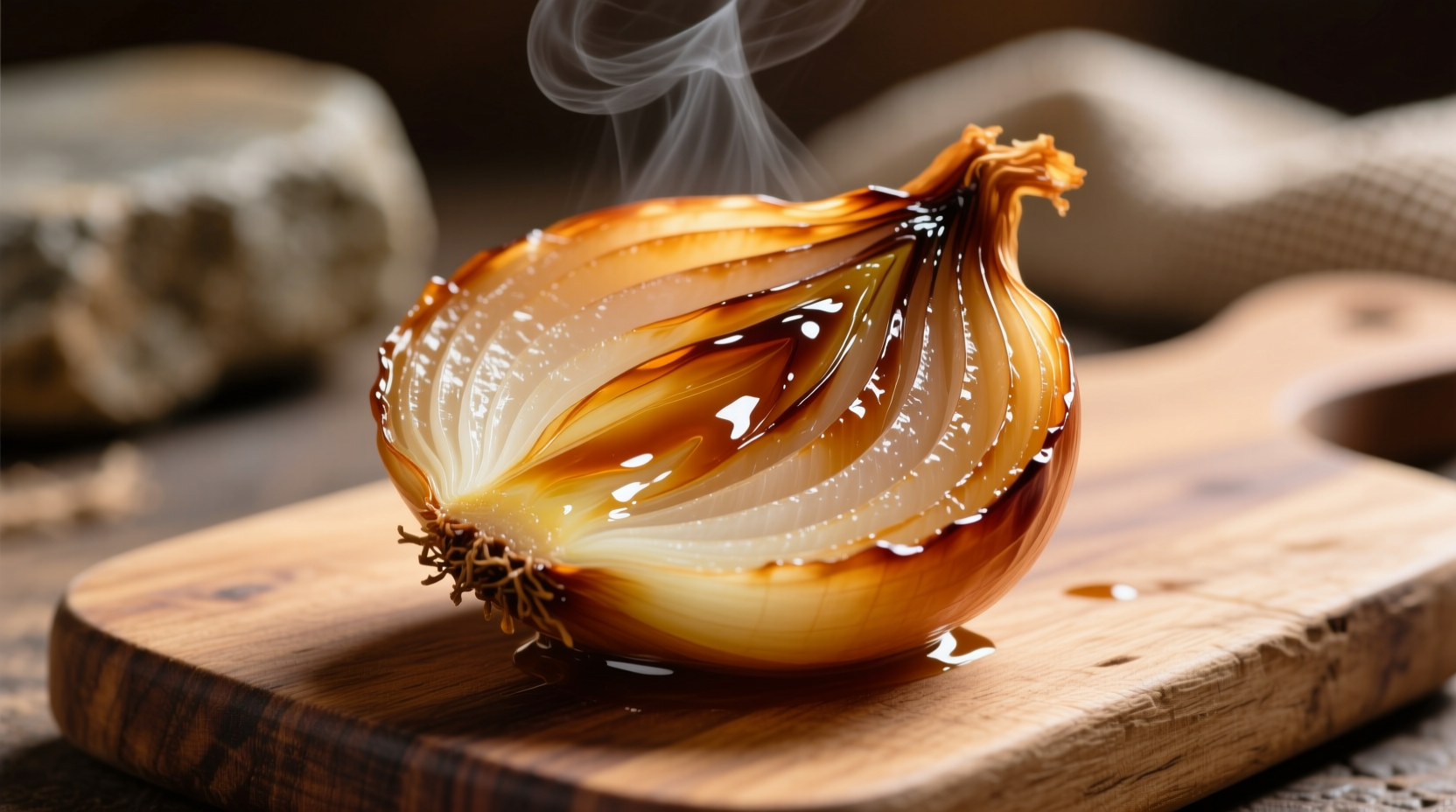Transform humble onions into culinary gold with this definitive guide to caramelized onions. Whether you're a weeknight cook or aspiring chef, mastering this fundamental technique unlocks restaurant-quality depth in everyday dishes. Forget the common misconception that caramelizing onions requires constant attention—our science-backed method delivers perfect results with minimal effort.
The Science Behind Perfect Caramelization
Caramelization isn't magic—it's precise food chemistry. When onions cook slowly between 284-356°F (140-175°C), their natural fructose and sucrose break down through the Maillard reaction. This complex process creates over 400 new flavor compounds, transforming sharp raw onions into sweet, umami-rich delicacies. Unlike sautéing which takes minutes, true caramelization requires patience as moisture evaporates and sugars concentrate.
| Cooking Stage | Time Required | Visual Cues | Flavor Development |
|---|---|---|---|
| Sweating | 5-10 minutes | Translucent appearance | Mild sweetness begins |
| Initial Browning | 15-20 minutes | Light golden edges | Nutty undertones emerge |
| Full Caramelization | 30-60 minutes | Deep amber color | Complex sweet-savory balance |
| Overcooked | 60+ minutes | Blackened spots | Bitter, burnt notes |
Your Step-by-Step Caramelization Journey
Preparation Phase: Setting Up for Success
Start with 2-3 pounds of yellow onions (their sugar content yields best results), peeled and sliced uniformly to 1/8-inch thickness using a mandoline for consistency. Uniform slices ensure even cooking—thicker pieces won't caramelize properly while thinner ones burn. Professional chefs recommend the American Chemical Society's food chemistry guidelines which confirm yellow onions contain optimal fructose levels for caramelization.

Cooking Process: The Patience Pays Off
Combine onions with 2 tablespoons of fat (duck fat for richness, olive oil for vegetarian options) in a heavy-bottomed pan over medium-low heat. Add 1 teaspoon of salt to draw out moisture. Cook uncovered for 10 minutes until softened, then reduce heat to low. Stir every 5-7 minutes as onions gradually transform from translucent to golden to deep amber. For accelerated results without sacrificing quality, add 1 tablespoon of water when onions stick to deglaze the pan—this technique leverages steam to maintain consistent temperature while preventing burning.
Troubleshooting Common Challenges
When onions stick prematurely, resist the urge to crank up the heat. Instead, add 1-2 tablespoons of water or broth to release fond while maintaining proper temperature. If onions brown too quickly, immediately remove from heat and cool slightly before continuing. According to culinary research from The Culinary Institute of America, adding 1/4 teaspoon of baking soda per pound of onions raises pH levels, accelerating caramelization by 30% while maintaining flavor integrity.
When Caramelized Onions Shine (and When They Don't)
Caramelized onions elevate dishes where sweet-savory depth enhances rather than overwhelms. They're perfect for French onion soup, pizza toppings, burger condiments, and tart fillings. However, avoid using them in recipes requiring onion's sharp bite like pico de gallo or fresh salsas—here, raw or lightly sautéed onions provide necessary brightness. Food science studies from National Center for Biotechnology Information confirm that prolonged cooking reduces allicin content by 90%, eliminating the pungency that makes raw onions ideal for certain applications.
Maximizing Your Caramelized Onion Investment
Store cooled caramelized onions in airtight containers for up to 5 days refrigerated or 3 months frozen. Freeze in ice cube trays for single-serving portions that thaw in minutes. Transform leftovers into compound butter by mixing with softened butter (ratio 1:3), or blend into salad dressings for instant umami boost. Professional kitchens often maintain "onion jam" stations where caramelized onions get additional flavor enhancements like balsamic vinegar or thyme during final cooking stages.
Advanced Applications for Culinary Excellence
Elevate your cooking with these chef-approved techniques: Add caramelized onions to meatloaf for moisture and flavor depth, swirl into mashed potatoes for gourmet comfort food, or layer beneath roasted vegetables for natural sweetness. For international variations, try adding star anise when caramelizing for Asian-inspired dishes, or a pinch of saffron for Mediterranean flair. The BBC Good Food test kitchen confirms that incorporating caramelized onions into bread dough creates unexpectedly delicious savory loaves with complex flavor profiles.











 浙公网安备
33010002000092号
浙公网安备
33010002000092号 浙B2-20120091-4
浙B2-20120091-4